SUMMARY
This is AI generated summarization, which may have errors. For context, always refer to the full article.

MANILA, Philippines – Fisherfolk, one of the most marginalized groups in the Philippines, face a myriad of challenges, including decreasing fish yield, competition from commercial fishing, and extreme weather events.
“Here in Barili, you will often catch giant squids, while in Tañon Strait, you can catch all kinds of fish, such as gutob, galunggong, and bansikol,” 51-year-old Venerando Carbon, a fisherman from Cebu’s Barili municipality, told Rappler.
Barili, Cebu is one of the municipalities surrounding Tañon Strait, the country’s largest marine protected area.
“I have been fishing for 10 years with my father and brothers. I have 10 brothers, and most of us were able to pay for school because of fishing. Some of my brothers didn’t finish school because there were not enough fish a few years ago,” Carbon said.
An average Filipino consumes 40 kilograms a year or 109 grams a day of fish and fishery products, the country’s second staple food next to rice.
Data from the Philippine Statistics Authority show that the growing demand for fish resulted in an increase in commercial fishing vessels in the country. Commercial fishing boats have better tools and technology that compete with small-scale fisherfolk in Philippine waters.
“These commercial fishing vessels do not supply to the community, they import their fish catch from other areas. While we cannot compete in importing, our fish catch as small-scale fishers provides more than enough food to our island,” Carbon said.
But these issues faced by fisherfolk in municipalities surrounding Tañon Strait are further exacerbated by plastic pollution, forcing them to live on subsistence.
Oceans as dumping sites
The increase in single-use plastics has also caused fish decline in Bantayan – a town northwest of Barili, Cebu, and across Tañon Strait.
“I’m not originally from Bantayan Island; I arrived in 1989,” said 54-year-old fisherfolk and community organizer John Ortega.
“Back then, we started fishing at 8 pm, and by 2 am, we went back to shore with our bountiful fish catch. Back then, we only needed four to five hours to meet our target. Now, we have to stay until 5 am to have enough to sell for our daily expenses. Some of our fisherfolk are losing hope. If not for selling seaweed, we will run out of livelihood on the island.”
Wanting to help his community and to take part in decision-making, Ortega discontinued fishing to become a community organizer. He decided to support his fellow fishermen by spearheading coastal cleanups and waste collection.

Coastal cleanups have become part of the daily tasks of Tañon Strait fisherfolk. “We conduct…cleanups almost every day on the beach and seashores. We find almost all types of single-use plastics from different parts of the world,” Ortega said.
He said that despite community members properly segregating their household wastes, plastic waste from cleanups has consistently increased through the years.
“I’ve witnessed how our fish became fewer while plastics and waste batteries accumulated in our oceans,” Ortega said.
Republic Act No. 9003 or the Ecological Solid Waste Management law requires local governments in the country to segregate municipal wastes at the source (household level). But two decades after the law was enacted, research conducted by the Senate showed that only about 40% to 85% of solid wastes are collected nationwide.
“I think the wastes [on the shores] are from other places where people treat the ocean as their dumping sites,” Ortega said.
Plastics’ impact on climate change, health
As more plastics make their way to coastal communities surrounding Tañon Strait, both Ortega and Carbon are worried about the status of the mangroves in their area. They believe the degradation of mangroves – the habitat for fish in Tañon Strait – is one of the causes of the decline in fish yield there.
Mangroves are ecosystems that provide multiple benefits in addressing climate change. For instance, mangroves act as carbon sinks of greenhouse gases and as coastline defenses against flooding and erosion. Mangroves also sustain food security through the provision of fish and other aquatic products.
“Plastic wastes from the ocean are trapped in the extensive root system of mangroves. Eventually, these wastes would accumulate and slowly suffocate the roots of mangroves,” said Matthew Vincent Tabilog of youth advocacy group Mangrove Matters PH.
Studies showed that between the 1980s and the 2000s, human activities caused 19% of the world’s mangrove destruction. More recently, plastic pollution has exacerbated mangrove degradation, further compromising the ability of mangroves to protect biodiversity and vulnerable coastal communities from climate change.

This is alarming news for the Philippines, considered one of the most vulnerable countries in the world to climate change impacts, with high exposure to tropical cyclones, flooding, and landslides.
These extreme weather events are expected to increase in intensity and frequency in the years to come. In 2021, Typhoon Odette alone caused over P3 billion ($58 million) worth of damage to the fisheries sector.
Due to the disproportionate impacts of plastic pollution on fisherfolk and coastal communities, environmental groups are calling for a “rights-based approach” to tackling plastic pollution.
In a 2021 UN Special Rapporteur report, vulnerable groups – waste-pickers, children and future generations, women, indigenous peoples, coastal communities, and those living in poverty – were identified as “first and worst affected by plastics.”
“Whether it’s toxic additives, incineration, or waste dumping, plastics affect health, the environment, and the climate in ways that are often dangerous to human health and safety,” said Marcos Orellana, UN Special Rapporteur on Toxics and Human Rights.
According to Oceana Philippines’ legal and policy director Liza Osorio, Filipinos are deprived of access to information on the issue, specifically on what toxic additives are added to plastics, along with the volume being produced and disposed of in the country.
“Filipinos are still unaware that single-use plastics are made out of fossil fuels. The plastics sector is largely unregulated. No one even knows how much single-use plastics are produced in the country. There is a lack of transparency,” said Osorio.
Plastic additives are what make single-use plastics flexible, durable, and heat-resistant. Health studies reveal that these chemicals can cause harm to humans once plastic products shed microscopic plastic particles or “microplastics” into the environment, or leach toxic additives from food packaging to food.
Among the most hazardous types of additives are phthalates, lead, and brominated flame retardants. These toxic substances can cause cancer, developmental disruption, or endocrine disruption.
Microplastics are a growing concern in Tañon Strait. In 2021, the Coastal Resources and Ecotourism Research, Development and Extension Center (CRERDEC) of the Department of Environment and Natural Resources’s (DENR) Ecosystems Research and Development Bureau found the highest density of microplastic concentration in the Tañon Strait Protected Seascape.
The findings of the CRERDEC report came as no surprise to the Tañon Strait fisherfolk. Carbon remembers catching fish “with plastics on their stomachs and turtles suffocated by plastic straws.”
“Fishes cannot distinguish microplastics from their food,” Ortega said. He also lamented that microplastics not only reduce their fish catch, but also “make the fish you eat contaminated with plastics.”
If left unregulated, plastics are expected to outnumber fish in the ocean by 2050. Multiple researches have already found microplastics in our oceans, fish, drinking water, food, and even human placenta.
What’s being done
When asked about their local government unit’s (LGU) initiatives to address plastic pollution, Ortega said Bantayan town passed an ordinance banning single-use plastics.
Ortega said the implementation of the ordinance resulted in “fewer residents buying single-use plastics.”
“To effectively segregate and collect wastes, our LGU imposes penalties on those that use and improperly dispose of single-use plastic,” said Ortega.
Bantayan is not the only municipality that passed a ban on single-use plastics in the Visayas; Apo Island, the first zero-waste island in the country, is located far south of Bantayan.
Nationwide, about 316 local governments, or 18% of all LGUs in the country, have an ordinance regulating or banning the use of plastic bags, based on the latest available data from the DENR. In Metro Manila, only 4 out of 17 cities have not regulated or banned the use of plastic bags. These LGUs are Malabon, Navotas, San Juan, and Valenzuela.
Unfortunately, despite efforts to keep their areas free from single-use plastics, the shores of both Bantayan and Apo islands continue to be inundated with trash from neighboring towns and communities brought by strong waves.
For Ortega, single-use plastic bans are inadequate to address plastic pollution as other municipalities have yet to adopt a similar policy.
“What about our neighboring municipalities? We have seen plastic waste carried by the ocean to our shores,” he said.
Carbon believes local governments should take the lead in organizing coastal cleanups and regulating the use of single-use plastics.
“It’s not the LGU but the fisherfolk who are the ones removing plastics from the shore. This has to change,” he added.

Nationwide ban needed
The call for a nationwide policy addressing plastic pollution has been echoed by multiple environmental groups and legislators throughout the years.
Environmental groups claim that local government implementation of subnational ordinances “work more so to regulate the use and sale of plastic bags and other single-use plastics, rather than comprehensively regulate all plastic types.”
Of the 388 bills and resolutions on phasing out single-use plastics and improving solid waste management that have been filed since 2010, only House Bill No. 9147, a bill consolidating 41 prior bills and resolutions, was approved on third and final reading in July 2021. The bill was not tackled by the Senate.
At present, a national regulation on single-use plastics has yet to be passed.
But for Oceana Philippines vice president Gloria Ramos, the government should focus on implementing the country’s existing waste management law. She said the Ecological Solid Waste Management Act already “prohibits and penalizes the use of environmentally unacceptable products and packaging.”
”Plastic falls as an environmentally unacceptable product and packaging. It’s actually hazardous and should be categorized as such because of its health impacts,” said Ramos.
Ramos also noted that the National Solid Waste Management Commission’s legal obligation to release a list of non-environmentally acceptable products and packaging (NEAPP) is already 20 years overdue.
In 2021, 121 LGUs passed resolutions urging the Commission to issue the NEAPP list and include in it single-use plastics, strengthening the call for a nationwide ban on single-use plastics and a strong implementation of the Ecological Solid Waste Management Act.
In the same year, the Supreme Court granted the petition of environmental groups for a writ of kalikasan and continuing mandamus against the Philippine government for its alleged failure to address the problem of plastic pollution.
The writ of kalikasan is a legal remedy that aims to uphold Filipinos’ right to a balanced and healthful ecology. The continuing mandamus is a command of the court directing government agencies or officers to perform their duty of protecting the environment.
“We really want to have this ban coming from the Commission. The intention of RA 9003 was to regulate or ban single-use plastics,” Ramos said.
A glimpse of hope
Despite the slow progress in the Philippines, international efforts to address plastic pollution are scaling up.
Last March, 173 countries, including the Philippines, agreed to draft a legally binding global treaty to end plastic pollution during the fifth session of the UN Environment Assembly in Nairobi, Kenya.
The historic resolution, called End plastic pollution: Towards a legally binding instrument, established a mandate for countries to “develop an international legally binding instrument on plastic pollution…based on a comprehensive approach that addresses the full life cycle of plastic.”
The landmark resolution recognizes that the impacts of plastic pollution is not only present in its disposal, but also across its full life cycle, including plastic production, transport, design, and use. This requires nations to establish a “whole life cycle approach” in dealing with plastic pollution.
The resolution also includes the creation of an intergovernmental negotiating committee that will aim to complete a draft of the global legally binding agreement by the end of 2024.
All hands on deck
Back home, the work is far from over. Ramos called on Filipinos to participate in “vibrant citizen engagement” that holds the government and businesses to account.
“We should not only call for our government to uphold the right to health and environment. More importantly, we must assert our right to public participation,” Ramos said.
The youth are also taking action. According to Tabilog, more young people are taking on environmental advocacies and listening to the stories of frontline communities.
“Storytelling is very important. If you have an experience already and tell everyone about it, it can be a domino effect and create a movement against plastic pollution,” said Tabilog.
As for Carbon, Ortega, and the rest of Tañon Strait fisherfolk, the work continues, even if all they can do for now is segregate their waste and show up in coastal cleanups.
“At the end of the day, we are the ones cleaning up our Philippine oceans,” said Ortega. – Rappler.com
Add a comment
How does this make you feel?
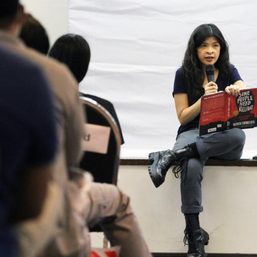

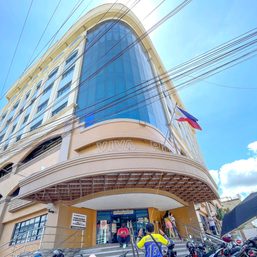
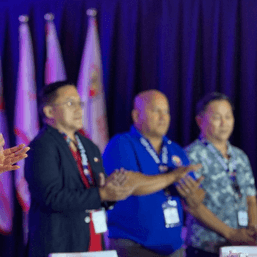
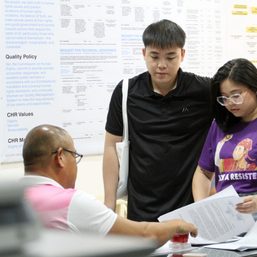
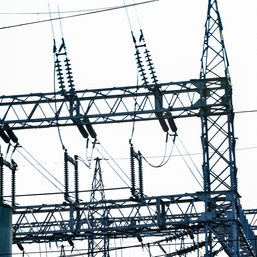
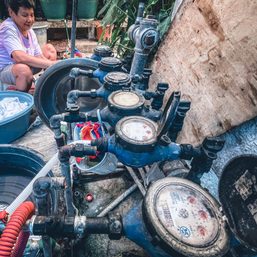
![[Rappler Investigates] Dangers of TikTok](https://www.rappler.com/tachyon/2024/04/dangers-tiktok-april-18-2024.jpg?resize=257%2C257&crop=309px%2C0px%2C1080px%2C1080px)
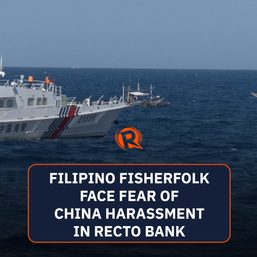
![[Rappler’s Best] The elusive big fish – and big fishers](https://www.rappler.com/tachyon/2024/04/The-elusive-big-fish-%E2%80%93-and-big-fishers.jpg?resize=257%2C257&crop=220px%2C0px%2C720px%2C720px)
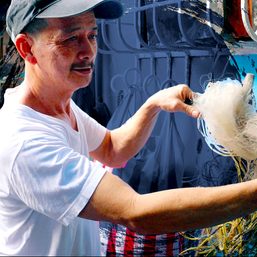
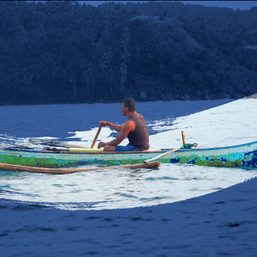
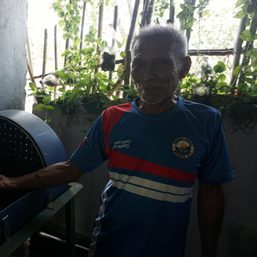
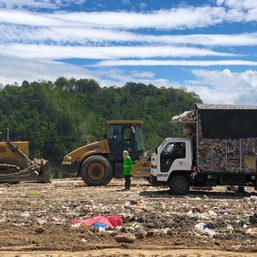
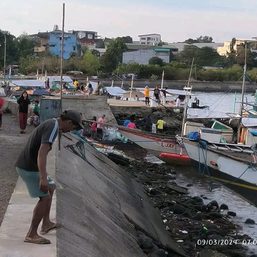
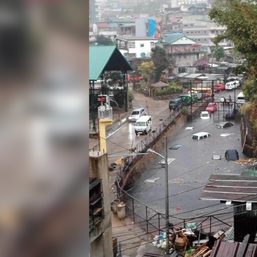
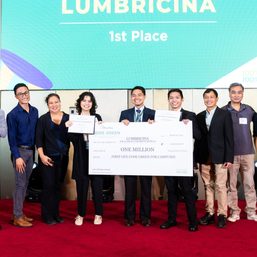
There are no comments yet. Add your comment to start the conversation.